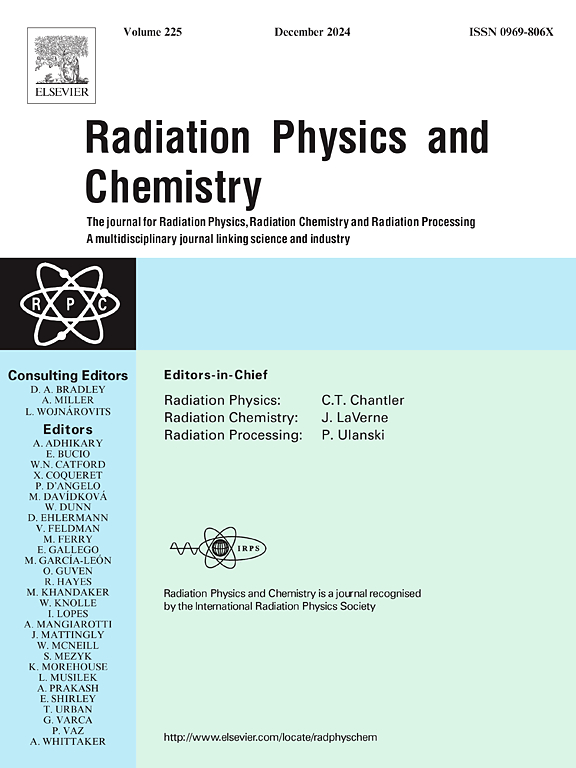Free volume impact on ionic conductivity of PVdF/GO/PVP solid polymer electrolytes via positron annihilation approach
IF 2.8
3区 物理与天体物理
Q3 CHEMISTRY, PHYSICAL
引用次数: 0
Abstract
This study reports the effects of free volume (FV) profiles on the ionic conductivities of PVdF/GO/PVP ternary polymer electrolytes using positron annihilation lifetime spectroscopy (PALS). The electrolytes were characterized by various tests such as FTIR, XRD, TGA-DTG, SEM, contact angle and DMA. FV profiles were evaluated by o-Ps lifetime (τ₃), intensity (I3) and FV fractions (fυ). PVdF exhibits a proton conductivity of 2.1 × 10⁻5 S/m at 80 °C. However, the introduction of GO leads to a decrease in conductivity, with PVdF/GO showing 1.7 × 10⁻5 S/m at 80 °C. The presence of PVP in PVdF/GO/PVP10 and PVdF/GO/PVP30 creates new FV spaces via hydrogen bonds and intermolecular interactions, expanding hydrophobic areas and increasing I₃ values. PVP's high mobility and positive charge density reduce the τ₃ values. In contrast, I₃ and fυ values decrease in PVdF/GO/PVP50, accompanied by a significant drop in τ₃ values and the proton conductivity and dielectric constant peak at 6.1 × 10⁻2 S/m and 77.38, respectively. High PVP concentration may enhance interactions within the polymer matrix, forming a dense structure that, despite reduced FV, maintains or enhances proton mobility through alternative conduction pathways and increased polarization. This study emphasizes the balance of FV and dielectric behavior for efficient electrochemical processes.
求助全文
约1分钟内获得全文
求助全文
来源期刊

Radiation Physics and Chemistry
化学-核科学技术
CiteScore
5.60
自引率
17.20%
发文量
574
审稿时长
12 weeks
期刊介绍:
Radiation Physics and Chemistry is a multidisciplinary journal that provides a medium for publication of substantial and original papers, reviews, and short communications which focus on research and developments involving ionizing radiation in radiation physics, radiation chemistry and radiation processing.
The journal aims to publish papers with significance to an international audience, containing substantial novelty and scientific impact. The Editors reserve the rights to reject, with or without external review, papers that do not meet these criteria. This could include papers that are very similar to previous publications, only with changed target substrates, employed materials, analyzed sites and experimental methods, report results without presenting new insights and/or hypothesis testing, or do not focus on the radiation effects.
 求助内容:
求助内容: 应助结果提醒方式:
应助结果提醒方式:


